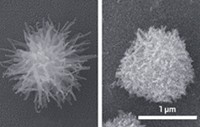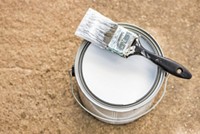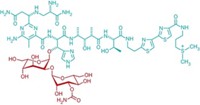Advertisement
Grab your lab coat. Let's get started
Welcome!
Welcome!
Create an account below to get 6 C&EN articles per month, receive newsletters and more - all free.
It seems this is your first time logging in online. Please enter the following information to continue.
As an ACS member you automatically get access to this site. All we need is few more details to create your reading experience.
Not you? Sign in with a different account.
Not you? Sign in with a different account.
ERROR 1
ERROR 1
ERROR 2
ERROR 2
ERROR 2
ERROR 2
ERROR 2
Password and Confirm password must match.
If you have an ACS member number, please enter it here so we can link this account to your membership. (optional)
ERROR 2
ACS values your privacy. By submitting your information, you are gaining access to C&EN and subscribing to our weekly newsletter. We use the information you provide to make your reading experience better, and we will never sell your data to third party members.
Materials
Titanic Inflammation In A Simulated Immune System
Model system reveals immunogenicity of titanium dioxide nanoparticles used in sunscreen, implants, and cosmetics
by Aaron A. Rowe
August 31, 2009
| A version of this story appeared in
Volume 87, Issue 35

Titanium dioxide nanomaterials are widely used in sunblock, cosmetics, and on the surfaces of medical implants, but epidemiological studies have associated them with an assortment of health problems. Brian C. Schanen, William T. Self, and their colleagues at the University of Central Florida have built a multicell culture system that is meant to mimic the human immune system and used it to evaluate the immunogenicity of three types of titania nanoparticles (ACS Nano, DOI: 10.1021/nn900403h). At high concentrations, anatase TiO2 crystals, rutile TiO2 crystals, and TiO2 nanotubes were each toxic to several types of cells. In lesser amounts, these nanoparticles prompted endothelial cells to release proinflammatory cytokines that triggered the maturation of dendritic cells, which activate CD4+ T cells that could go on to cause tissue damage. Those same materials also raise the level of reactive oxygen species, another class of molecules that stimulate inflammation. By comparison, micrometer-sized titania particles did not cause significant inflammation. Despite those results, Self says “it is too soon to warrant concern regarding nanotitania in sunscreen.”





Join the conversation
Contact the reporter
Submit a Letter to the Editor for publication
Engage with us on Twitter